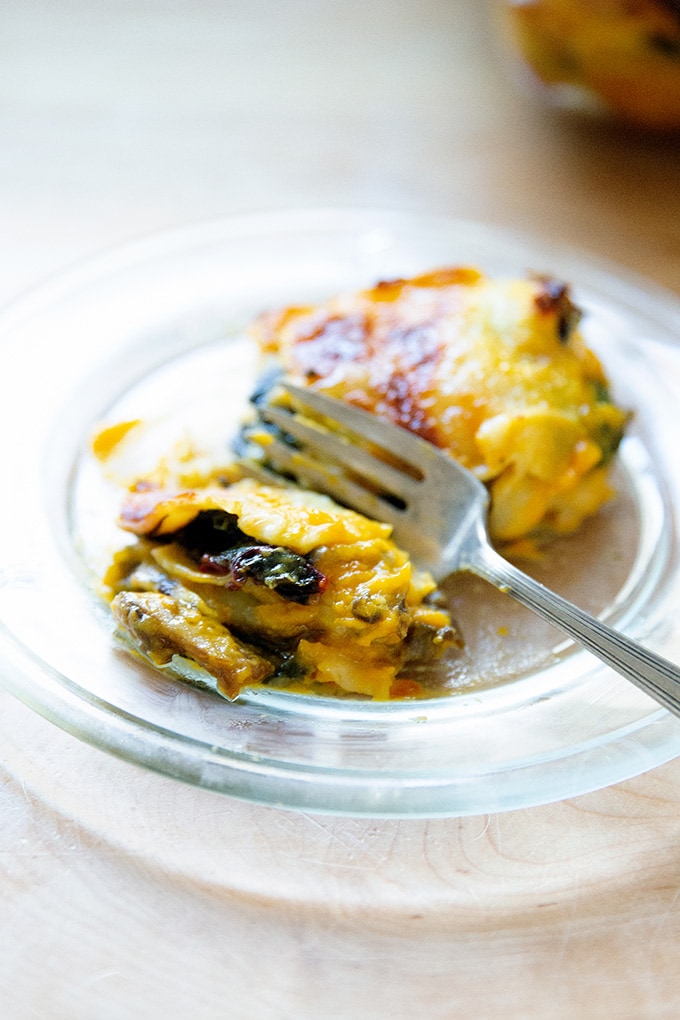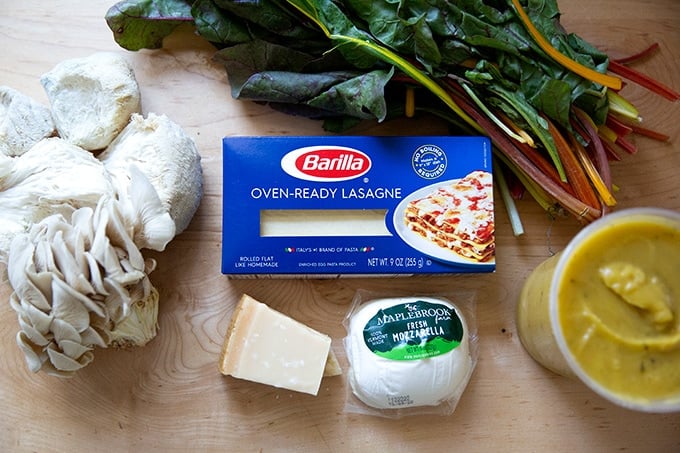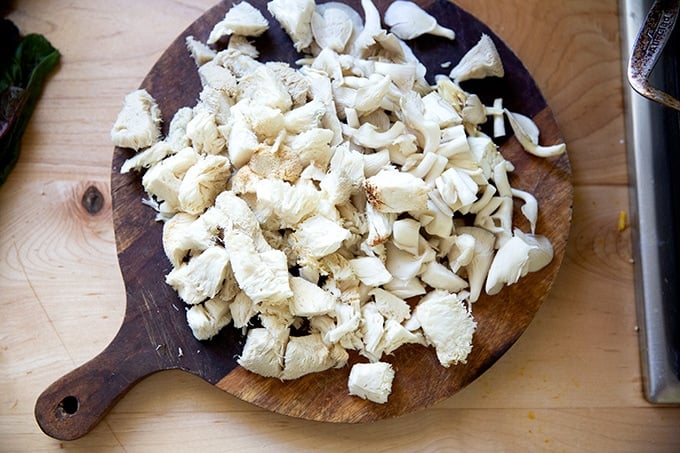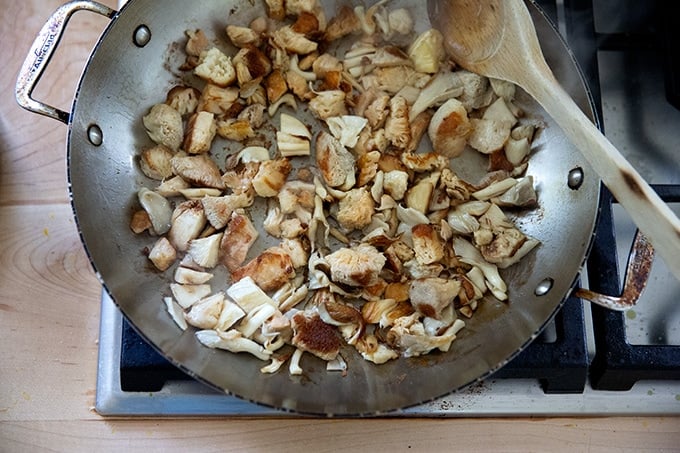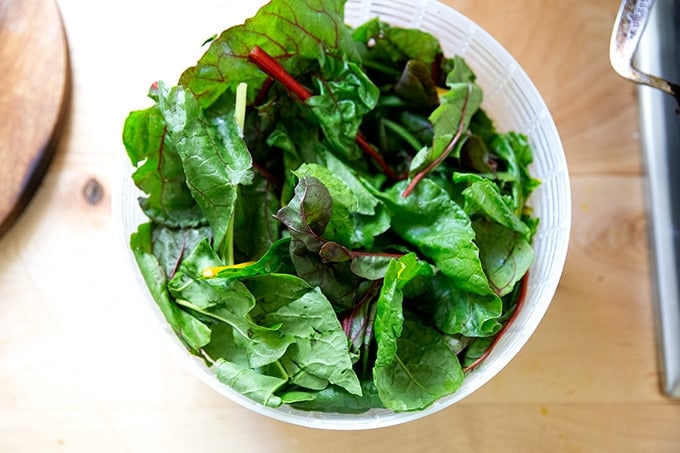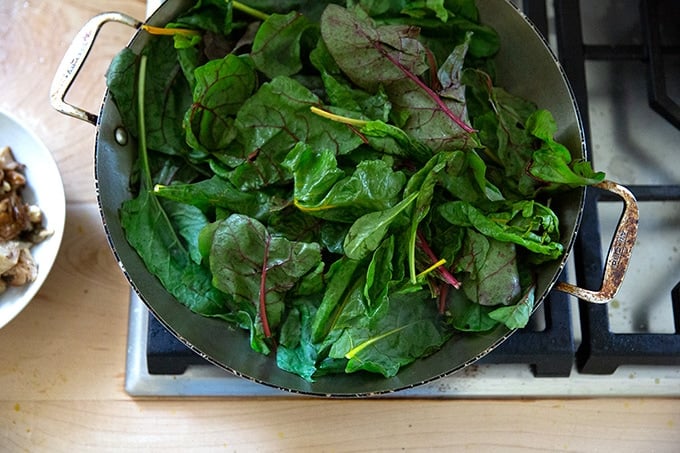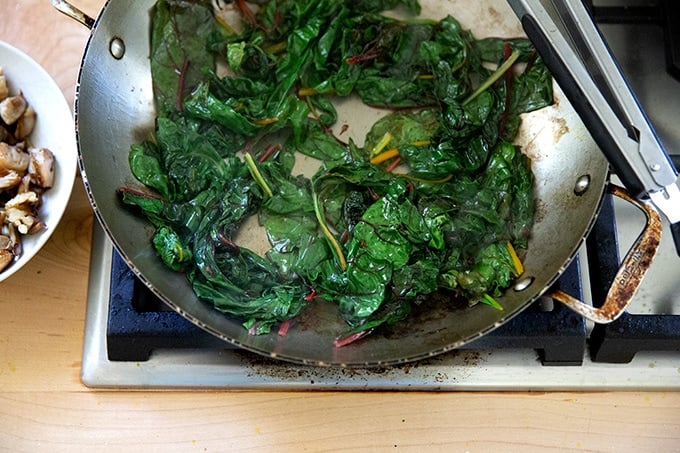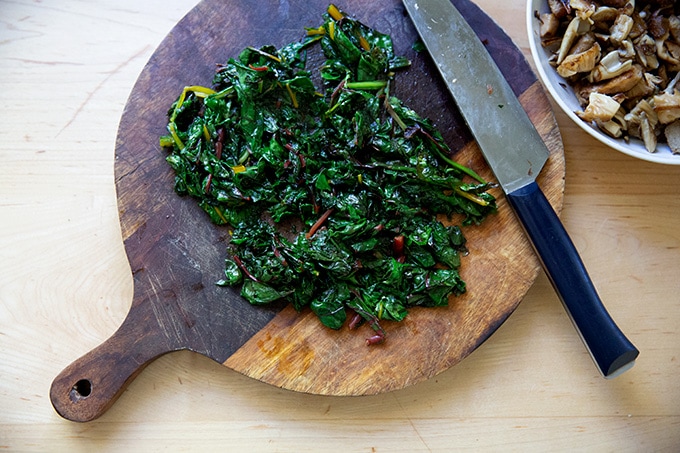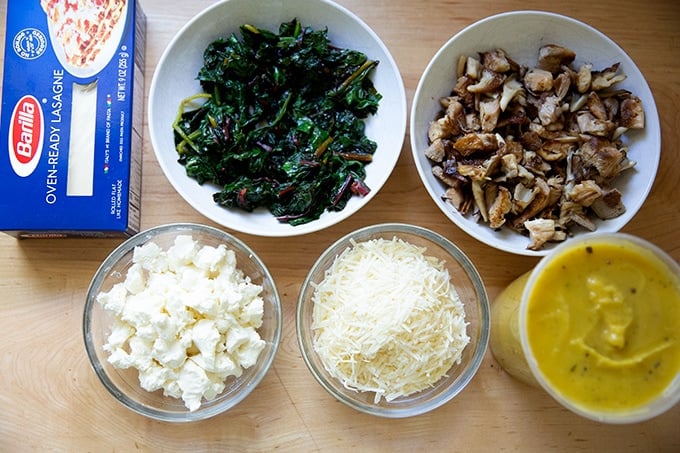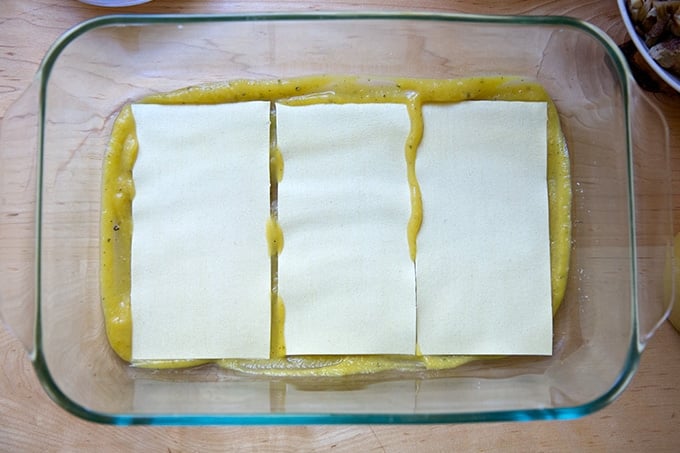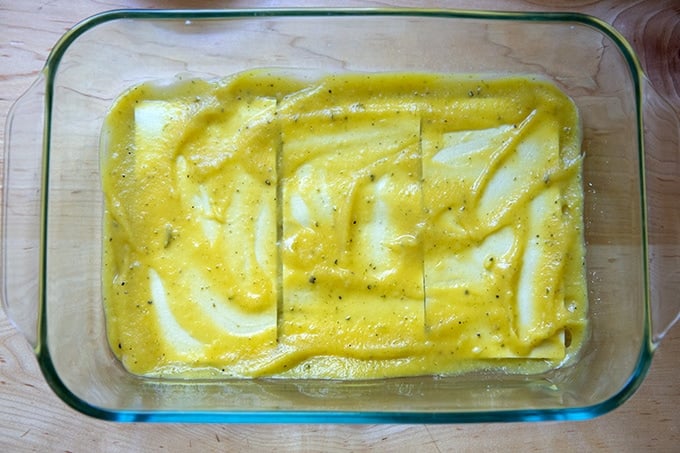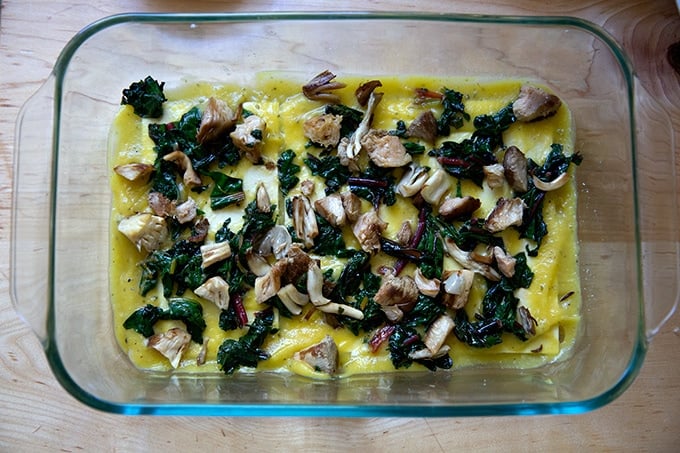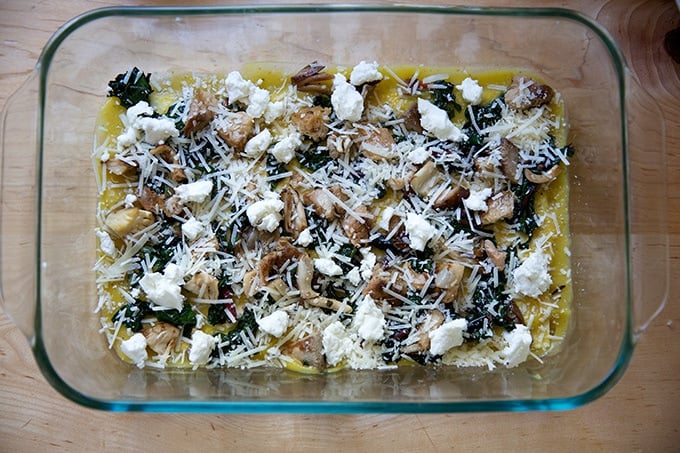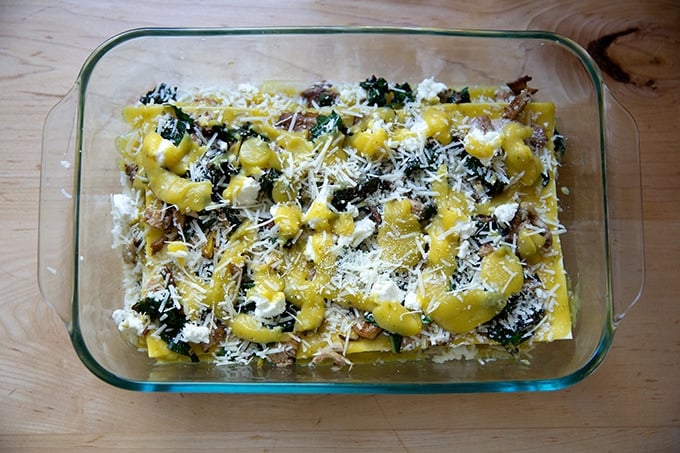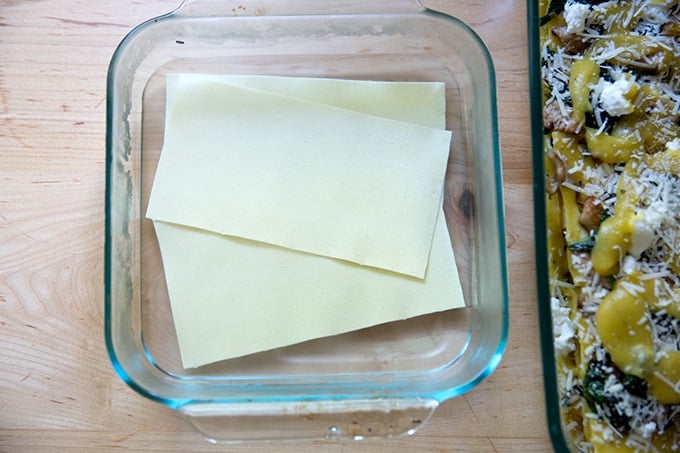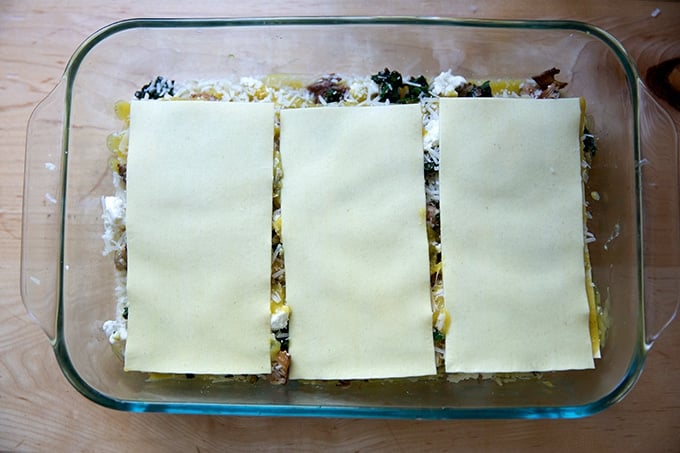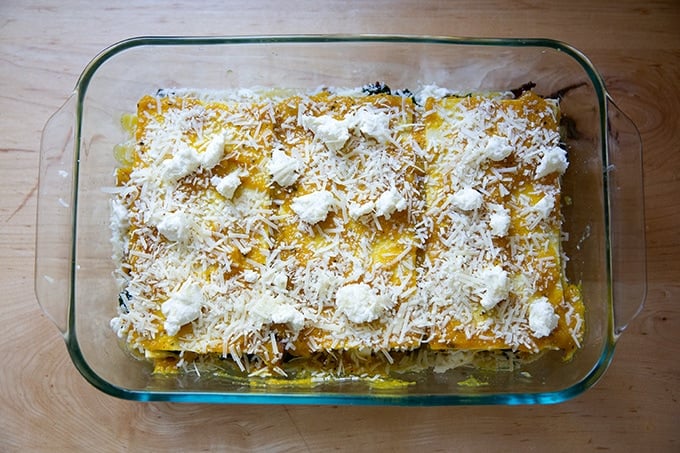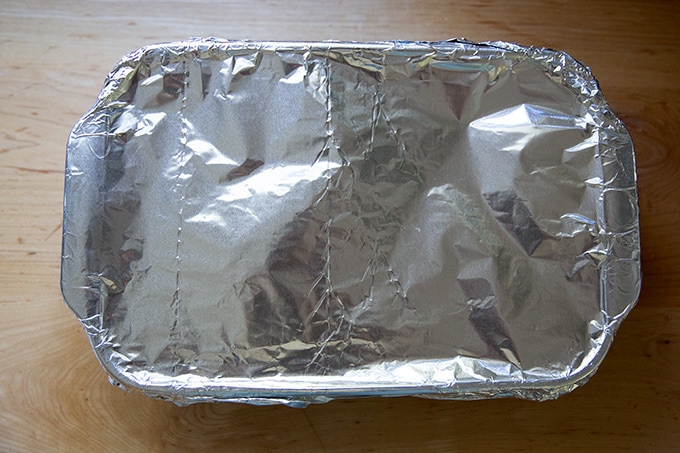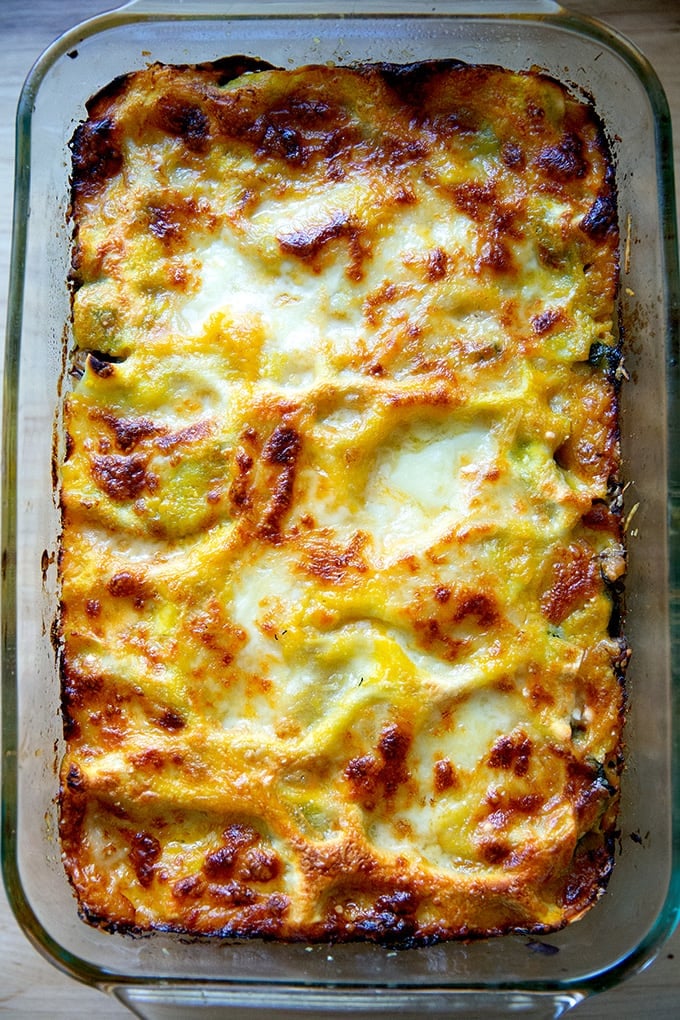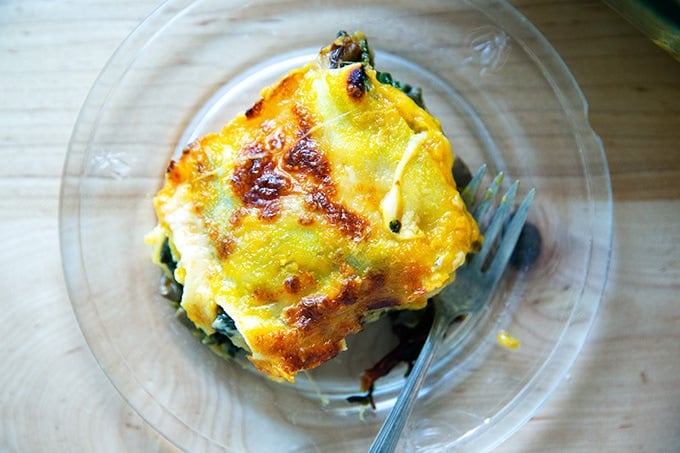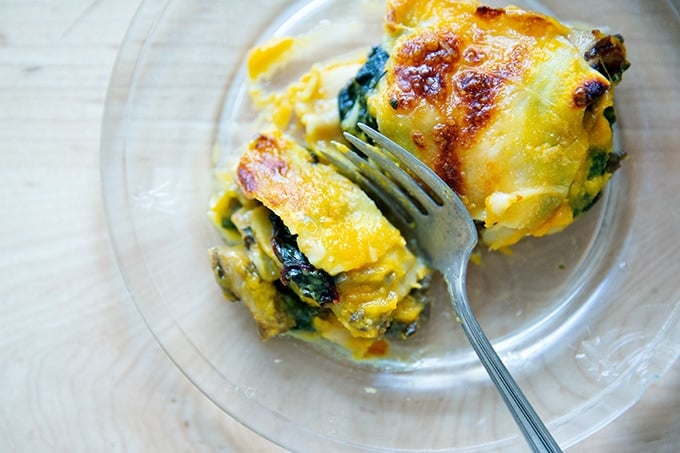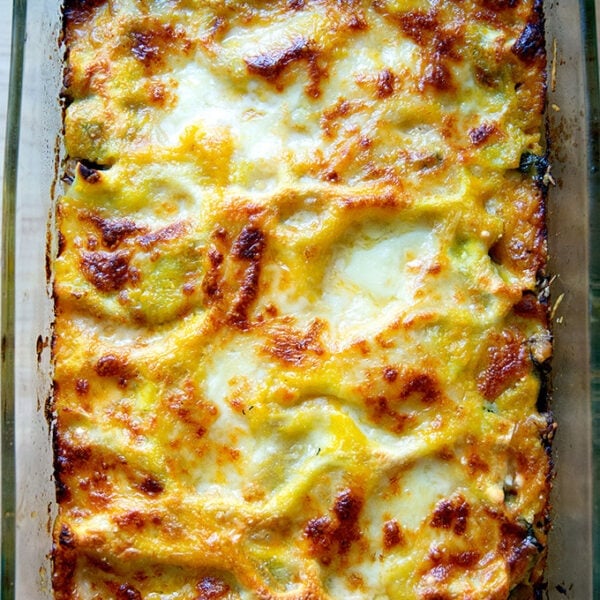Over the years, I’ve used the sauce in other ways, namely in this baked penne recipe, and most recently in lasagna in place of tomato sauce. It works beautifully and pairs well with many other flavors and ingredients from caramelized leeks and hot Italian sausage to wilted greens and sautéed mushrooms. Here, I’m using sautéed Swiss chard and oyster mushrooms, but this recipe is easily customizable to what you have on hand and prefer. What I love about this recipe (and lasagna in general) is that you can assemble it ahead of time and bake it when you are ready. This past week, in anticipation of friends coming over for dinner on Friday, I made the lasagna on Thursday afternoon, covered the pan in foil, and stuck it in the fridge until the following evening, about an hour before dinner. On Friday, our friends arrived as the lasagna was cooling, leaving me with lots of time to hold the 4-month-old baby (!!) in attendance. Never have I been more grateful for the existence of lasagna. Incidentally, this was a really simple, doable, stress-free, make-ahead-able menu:
lasagna (assembled on Thursday, baked on Friday)salad with this apple cider vinaigrette (dressing made on Thursday)focaccia (prepped on Thursday, baked on Friday)French apple tart (made on Friday)
PS: If you’ve been reading for awhile, you know about this other butternut squash lasagna recipe, which is near and dear to my heart, something I make often around the holidays and throughout the winter. It calls for roasted cubes of butternut squash, a rosemary-and-sage infused bechamel, and a final layer of salted whipped cream, which imparts the baked lasagna with brown buttery notes. It is heaven. How does this compare? Well, it’s just different, a little lighter, more vegetal, but just as delicious in its own way.
Lasagna: Some Notes
Assembly: My formula for lasagna is such: sauce + no-boil noodles + sauce + cooked vegetables + mozzarella and parmesan, then repeat. The idea is to always have sauce on either side of the noodles. The vegetables can be anything you like, but cooked vegetables are important because you want to remove the water content, which prevents the lasagna from being soggy. I never include a ricotta-egg layer, which simplifies the process. No-Boil Noodles: I love no-boil noodles, but sometimes they don’t perform optimally, especially on the top layer. With this recipe, which is less saucy than other lasagna I make, I soak the last 3 sheets of noodles in hot water for 2 minutes before transferring them to the lasagna. This ensures they’ll expand beautifully in the oven.How to Freeze/Make Ahead: The assembled lasagna can be stored in the fridge covered for 24 hours. To freeze, bake the lasagna for 40 minutes covered, remove from the oven, let cool completely, then freeze.
How to Make Butternut Squash Lasagna, Step by Step
Gather your ingredients: Mushrooms, Swiss chard, no-boil noodles, mozzarella, parmesan and butternut squash sauce (recipe is included below) Chop the mushrooms: Sauté them. Wash your greens if they are dirty. Sauté them. Chop them up. Begin assembling by spreading a thin layer of sauce in the bottom of the baking dish. Top with 3 layers of no-boil noodles. Spread another thin layer of sauce over the top. Top with a layer of vegetables. Sprinkle parmesan and mozzarella over the top. Repeat this layering until you’ve topped the final layer of cheese with a layer of sauce. Soak the final layer of noodles in hot water for 2 minutes. Transfer to the baking dish. Top with another layer of sauce and cheese. Cover with foil and bake immediately or transfer to the fridge for 24 hours. Ta-da 🎉 5 from 18 reviews
